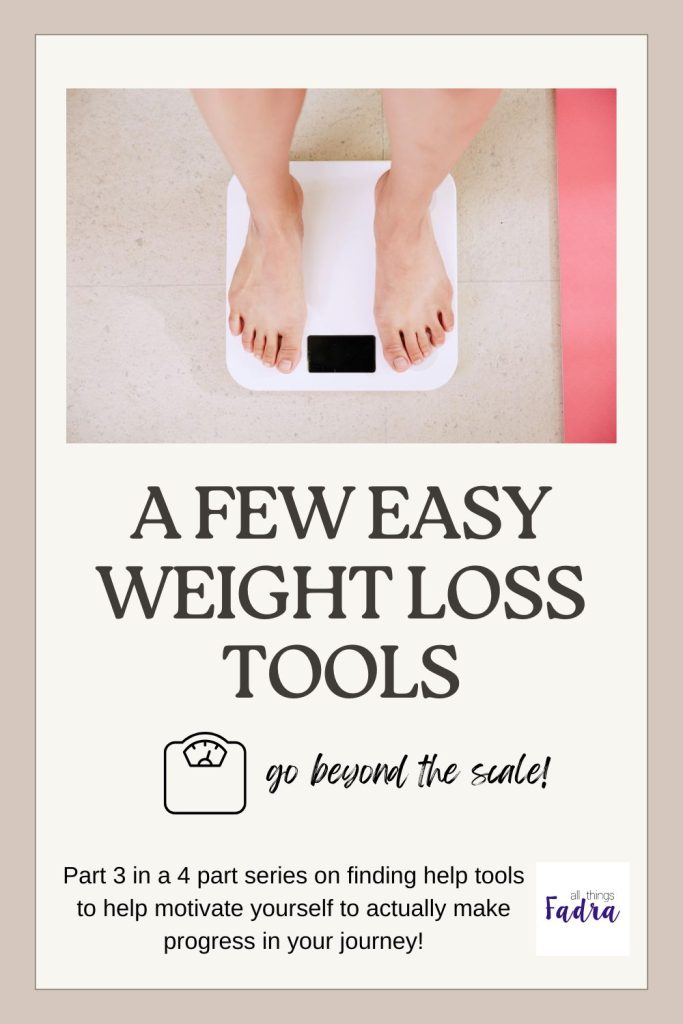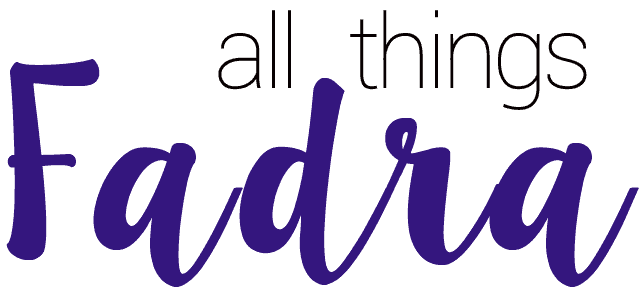Looking for the best tools to help you with weight loss? Yes, you need some. It’s really challenging to rely simply on hard work and willpower, unless you’re superhuman or at least way more disciplined than me.
Why You Need Weight Loss Tools

Simply put, knowledge is power. The suggestions below won’t help you lose weight. They’ll help you understand what you need to do to lose weight. That can be tracking your calories, measuring your food, connecting with like-minded people, or getting professional support.
On that last note, there are great program out there like Weight Watchers and Noom. I’ve tried the latter and not the former but I know they’ve both been wildly successful for people. They just aren’t for me. I don’t want a touchy-feely, educational program. I want science and stuff to teach me what to do. But regardless of which direction you choose, it really comes down to accountability, to yourself, and sometimes, to others.
The Power of Accountability (Friends and Family)

The best tool is a friend or family member willing to go on this journey with you. Even if someone isn’t trying to actively lose weight, it helps if they aren’t constantly tempting you with, “come on, let’s go get Mexican tonight.” Yes, I’m speaking about my very own husband. I only go to the gym consistently when my son is going. And I only track my calories when he does it. Yes, I will probably be crying in a corner eating chocolate chip cookies when he goes to college – but only for a little while.
Accountability Tip: Ask a friend to join a weekly healthy habit challenge with you.
Visual Progress: Why Photos Matter
Whether you have that family member or friend, you need to reach deep inside you and find commitment. Weight loss is not a quick thing. You can’t starve yourself for a week, not lose anything on the scale, and then just say forget it, nothing works.
And believe the people that say, don’t rely on the scale for progress. Take pictures. These pictures might make you uncomfortable or make you feel disgusted with yourself. DON’T. These pictures show that today is the day you are proudly investing in your body and will make healthy changes.


(Don’t get too excited. These photos are from 2016 and these photos were after an 11 day change in my diet. I thought I was making zero progress but I was clearly wrong!)
Then give yourself the gift of time. Start with just one month. Try something simple like giving up soda (or switching to diet). Or allow yourself to eat out only once a week instead of seven. Go for a daily walk. Just start with something positive. And take pictures. Even if you don’t lose a single ounce, I can almost guarantee you will see the difference on your face. Keep going.
Calculating Your Basal Metabolic Rate (BMR)
During that one month, figure out your Basal Metabolic Rate. This is the amount of calories you burn from just existing, factoring in your age, weight, and sex, as well as your level of exercise.
This is my favorite simple BMR Calculator.
Do me a favor. Don’t try to trick the calculator to get more calories. Don’t say, “well, I do plan on working out 3-4 times per week.” Just be honest with yourself. If you’re sedentary, that’s okay. Change is on the horizon.
This number is your maintenance level of calories. This is how much your body needs to keep the status quo. You’re not exercising more. You may be sitting on your couch all day. But if you’re going over this number on a daily basis, you’re going to keep gaining weight. So let’s just try to start here and get your body used to how much you should be eating.
Calorie Tracking Apps: MyFitnessPal vs. MacroFactor
See how I’m easing you into this? If you start by cutting half your calories and giving up everything you love, you’re going to be miserable. Once you get a sense of how much you should be eating, it’s time to reduce that amount so the pounds can melt away.
WARNING: This is a slow process. I’m talking months, not days.
There are several apps out there that can help you track your calories. Here are my two favorites.
MyFitnessPal
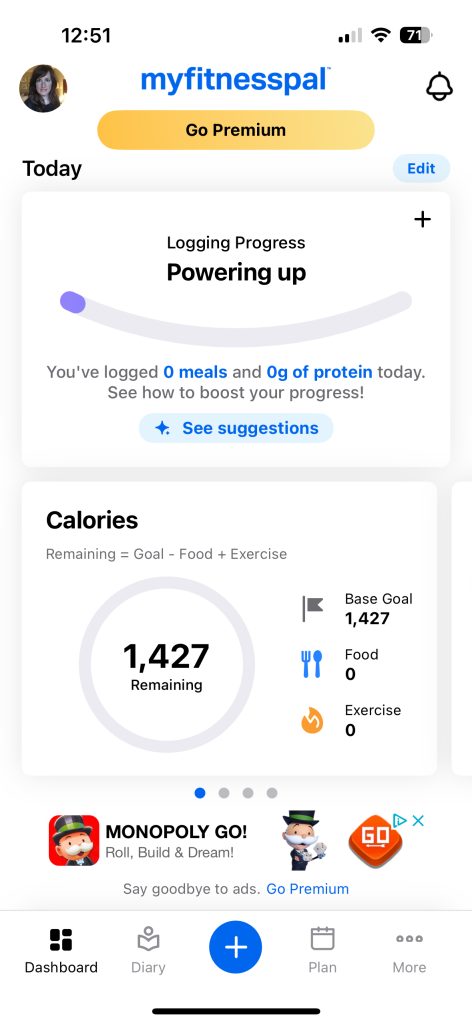
You’ve probably heard of this one already. Arguably one of the most popular fitness and food tracking apps out there, MyFitnessPal was once owned by Under Armour (it’s since been sold to a private equity firm). It gamefies your fitness by allowing you to connect with other users but the biggest benefit is their huge calorie tracking database. With a simple scan of a barcode (when you have the premium subscription), you can track your food by entering in the amount of food you ate. MFP will add the calories as well as the macros.
Speaking of which, it can also help you figure out what your daily calorie intake should be to lose your desired weight, as well as track your macro goals, and your exercise. Caution: this app is truly only valuable with the premium subscription at a hefty $79.99 per year but it’s one of the easiest out there.
MacroFactor

I’ve only recently switched from MyFitnessPal to MacroFactor at the advice of my son. At the same annual price of $71.99, you get all of the same functions as MyFitnessPal. The food database isn’t as large but I find it to be more accurate. And it has a built-in algorithm that looks at your daily weight, daily caloric intake, and daily macros, and automatically adjusts it for you to get you moving in the right direction.
MacroFactor also has a great user group on Facebook that I’ve used to connect to women just like me!
Tracking Tip: Start with just tracking breakfast and build up from there.
Should You Weigh Yourself Every Day?
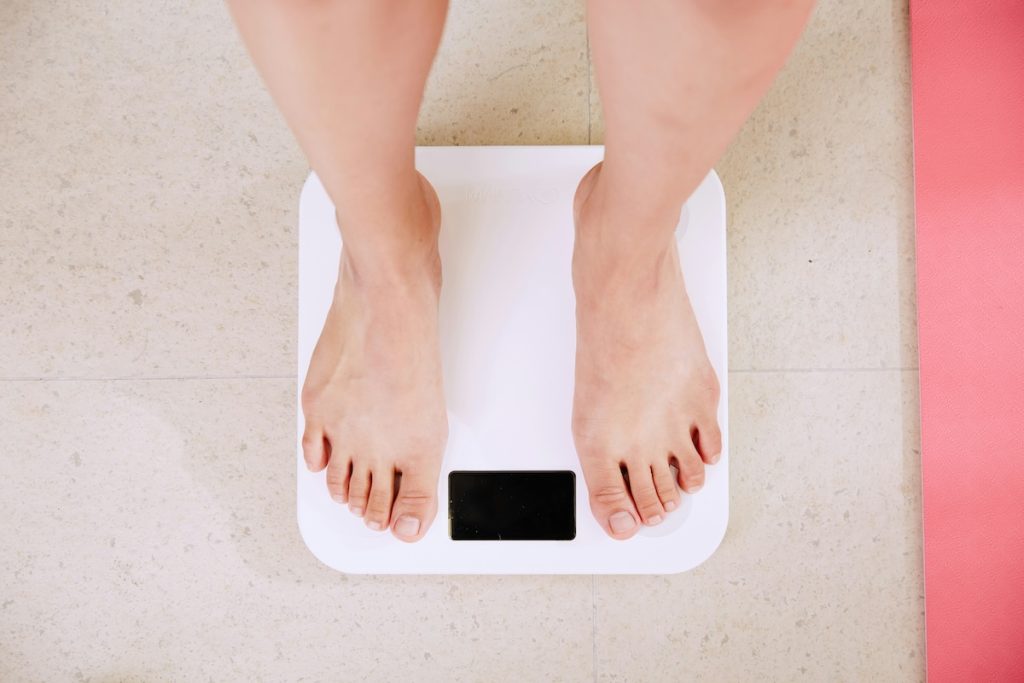
There are two schools of thought on this.
- No, don’t do it. Your weight fluctuates daily based on your water and salt intake and whether you’ve had some quality time in the potty.
- Yes, do it. It’s important to measure yourself every day so that you can see that your weight fluctuates daily and a gain is no reason to panic and give up. By tracking this, you can see trends and understand when certain foods make you retain water.
As you might have guessed, I’m clearly in camp 2 but my son is in camp 1. Do whatever makes you feel good but don’t avoid the scale because you’re afraid of what it says. It’s time to be honest with yourself.
Weight tip: Before you even start making changes, weigh yourself every day for a week. This is not to beat yourself up but rather to introduce to you the natural daily fluctuations in your body weight. When you’re trying to lose weight, seeing the scale go up can be de-motivating. But when you think about it as part of a trend, you know it might just be a small fluctuation.
Why Measuring Your Food Works
All of these tools are useless though unless you are accurately tracking what you’re eating. Some people even go so far as to say that measuring every single thing can lead to an eating disorder. If you find that it’s too stressful or leading to unhealthy habits, then just don’t. But if you find you don’t want to measure your food because you don’t want to count that Costco cashew cluster that you just had a little nibble of, you’re fooling yourself.
It took me a few years but I’m fully on the food scale train. If the idea of measuring your food in grams scares you, here’s why you should rethink that. (By the way, here’s the food scale I use).

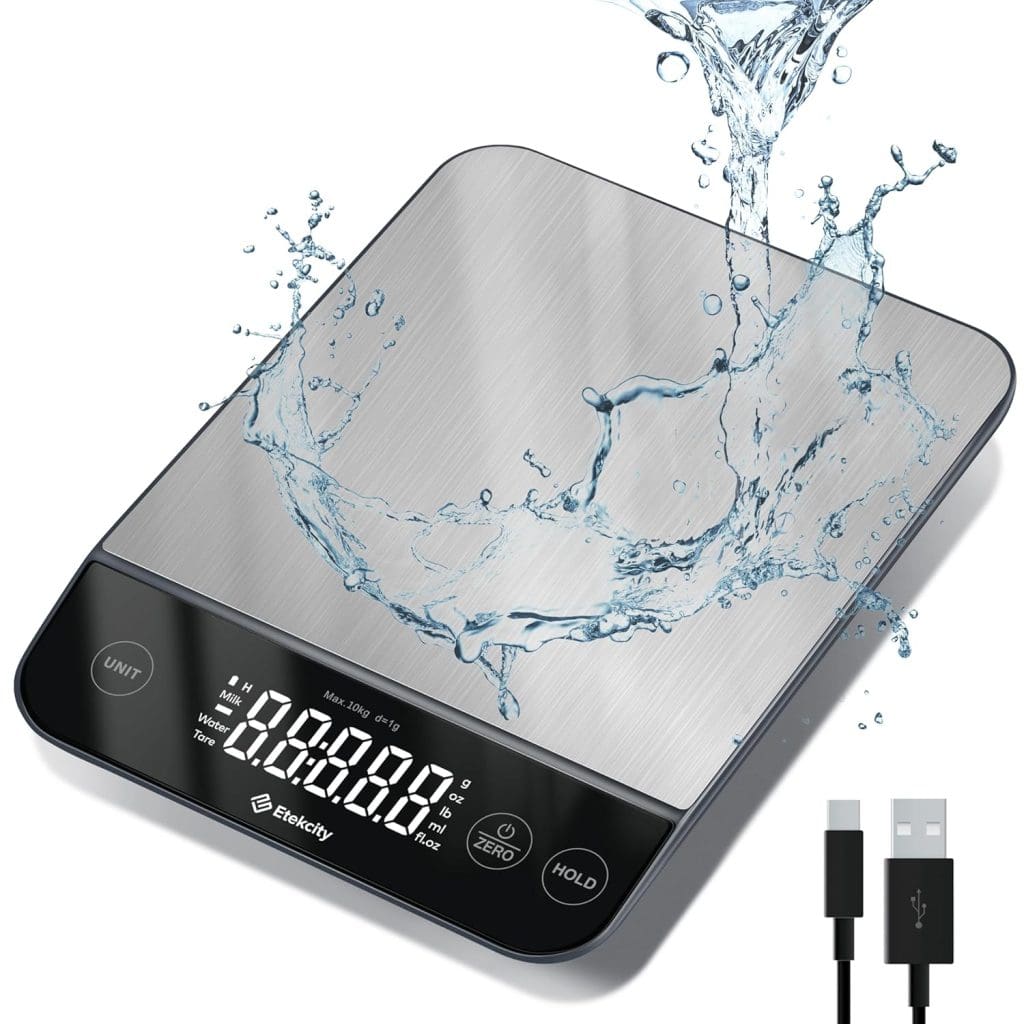
When I’m eating cereal for breakfast (I usually have a bowl of Premier Protein Mixed Berry Cereal every morning), I measure it out. According to the nutrition label, one serving is 180 calories and has fantastic macros, including 20g of protein. And a serving size is 1 cup or 42g. I guarantee that if you measure out a bowl by volume (1 cup) and measure out a bowl by weight (42g), the second bowl will have more food.
And once you start measuring by grams, your whole life will get easier and you’ll dirty up less measuring cups!
Try using a calorie tracker today—see how easy it can be to stay on track. Knowledge is power!
Remember, small consistent steps create long-lasting results. Celebrate each little win, and don’t beat yourself up over small setbacks.
What about measuring exercise? Or even doing exercise? Glad you asked. That’s coming up next (no gym required)!
This is Part 3 of a four part series on losing weight and healthier living. I’m just like you – trying to take it all in and figure out what works. Join me for the rest of the series!
Part 1: How to Actually Lose Weight: A Realistic Approach (No Gimmicks!)
Part 2: Why Healthy Eating Matters More Than You Think: Calories and Macronutrients Explained
Part 4: When Dieting Isn’t Enough: Tackling Hidden Barriers to Weight Loss
